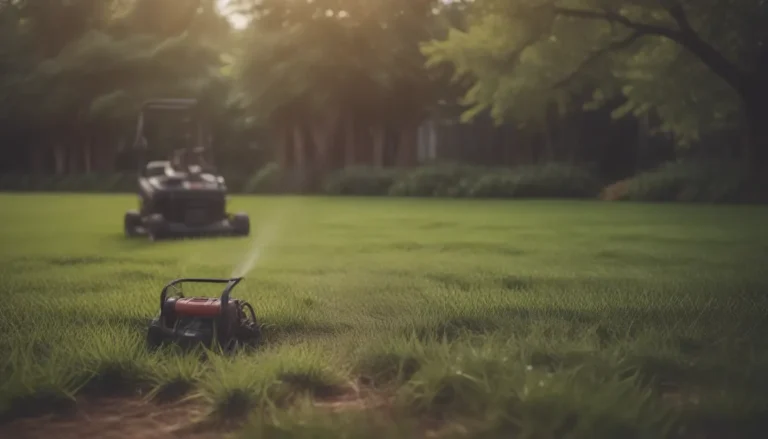Comprehensive Guide to Growing Stunning Blue Russian Sage Plants

If you’re looking to add a touch of elegance and charm to your garden, Russian Sage (Perovskia atriplicifolia) might just be the perfect addition. This drought-tolerant perennial is known for its delicate silver-gray foliage and striking lavender-blue blooms, making it a popular choice for gardeners. In this comprehensive guide, we’ll explore everything you need to know about growing and caring for Russian Sage plants to ensure they thrive in your garden.
Understanding Russian Sage Plants
Before we dive into the care requirements for Russian Sage plants, let’s take a closer look at this resilient and picturesque plant. Native to central Asia, Russian Sage thrives in full sun and well-drained soil, making it an ideal choice for dry or rocky landscapes. Its tolerance for a variety of soil types, from sandy to loamy to clay, makes it a versatile addition to any garden.
Benefits of Growing Russian Sage
- Drought-tolerant
- Low-maintenance
- Attracts pollinators like bees and butterflies
- Not considered invasive in most regions
How to Care for Russian Sage Plants
To ensure your Russian Sage plants grow and bloom optimally, it’s important to provide them with the right care. Here are the main care requirements for growing Russian Sage:
Light
Russian Sage thrives in full sun, requiring at least six to eight hours of direct sunlight per day. In areas with intense heat, some afternoon shade may be beneficial to prevent stress on the plant.
Soil
Russian Sage prefers well-drained soil with a slightly alkaline to neutral pH. Ensure good drainage to prevent issues like root rot.
Water
Once established, Russian Sage is well-suited to dry conditions and requires minimal watering. It’s better to keep them slightly dry rather than consistently moist.
Temperature and Humidity
Russian Sage is tolerant of a wide range of temperature conditions, from hot summers to cold winters. In extremely hot or arid climates, some protection may be needed to prevent stress.
Fertilizer
Fertilize Russian Sage sparingly in the spring with a balanced, slow-release fertilizer. Monitor the plant’s growth and health to adjust fertilizer application as needed.
Types of Russian Sage Plants
While the classic Russian Sage variety is common, there are several cultivars available, each offering unique characteristics. Some popular varieties include:
– Blue Spire Russian Sage
– Little Spire Russian Sage
– Longin Russian Sage
Pruning Russian Sage Plants
Pruning plays a crucial role in maintaining the health and appearance of Russian Sage plants. In late winter or early spring, prune back the previous year’s growth to encourage new growth and prevent legginess. Remove any dead or damaged branches throughout the growing season to promote airflow and prevent disease.
Propagating Russian Sage Plants
If you’re interested in propagating Russian Sage, you can do so using cuttings. Follow these simple steps to propagate Russian Sage plants:
1. Take a cutting from a healthy plant
2. Dip the cut end in rooting hormone (optional)
3. Place the cutting in water or soil
4. Monitor for root growth and pot up the cutting once roots develop
Growing Russian Sage Plants from Seed
For those who prefer to start from scratch, growing Russian Sage from seed is a viable option. Start by sowing the seeds indoors in late winter for successful germination. Transplant seedlings outdoors once the threat of frost has passed, and enjoy watching them develop into mature plants over the growing season.
Potting and Overwintering Russian Sage Plants
Russian Sage can be successfully grown in containers, making it a versatile option for gardens of all sizes. When potting Russian Sage, ensure the container has adequate drainage and repot as needed to accommodate the plant’s growth. In regions with harsh winters, protect Russian Sage plants from frost damage by applying mulch and providing additional insulation.
Blooming Russian Sage Plants
Achieving a profusion of blooms on Russian Sage plants is a matter of providing optimal growing conditions and proper care. Follow these tips to encourage blooming:
– Prune the plant in late winter or early spring
– Deadhead spent flowers regularly
– Ensure ample sunlight and well-drained soil
Common Problems with Russian Sage
While Russian Sage is a resilient plant, it can encounter some common issues. Here’s how to solve them:
– Powdery Mildew: Ensure proper spacing and airflow to prevent powdery mildew
– Root Rot: Plant in well-draining soil and water sparingly to prevent root rot
In conclusion, growing Russian Sage plants is a rewarding experience that can add beauty and charm to your garden. By following the care tips outlined in this guide, you can ensure your Russian Sage plants thrive and bloom beautifully year after year. So why not add this stunning perennial to your garden and enjoy its elegant silver-gray foliage and striking lavender-blue blooms? Happy gardening!





